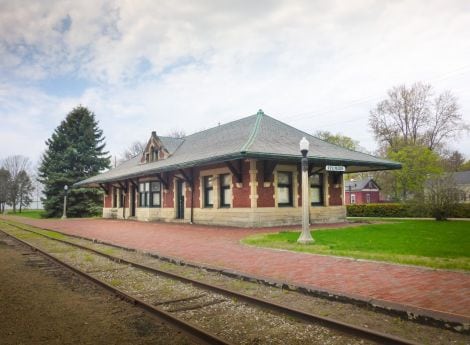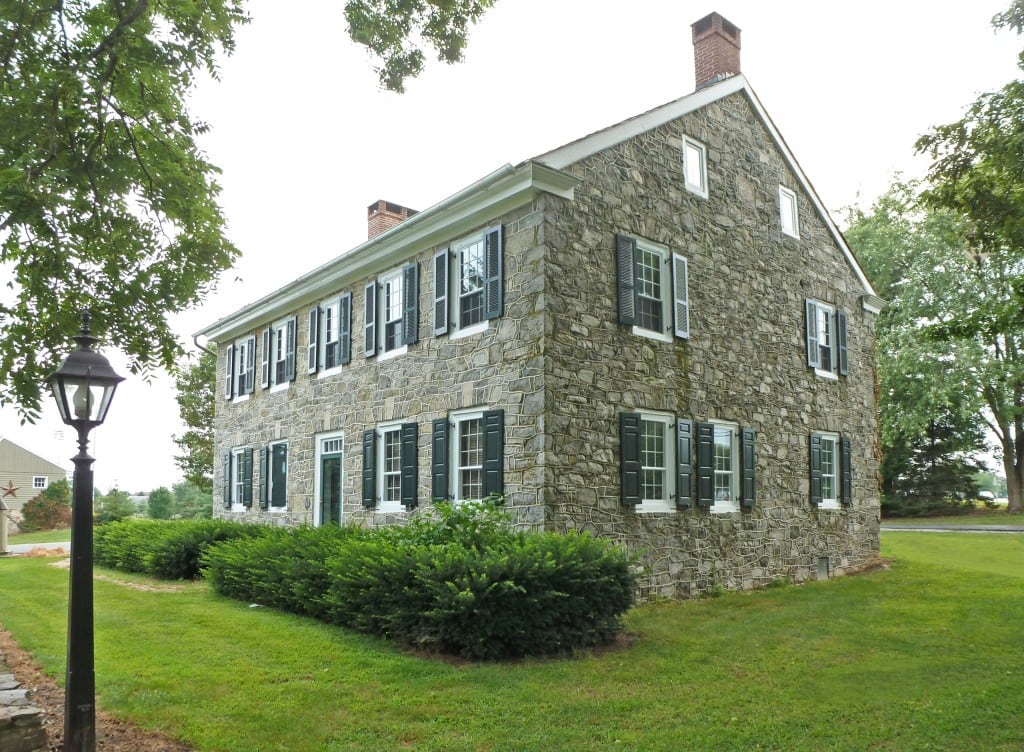Guide for Saving a Historic Building
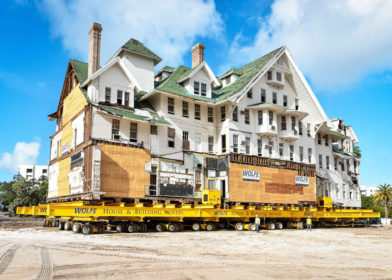
Our crew moved the Belleview Biltmore Hotel in Belleair, FL, just west of Tampa. The hotel was built in 1897 by railroad tycoon Henry B. Plant. The building weighed 1,750 tons, making it one of the heaviest frame buildings ever moved.
Summary
You are passionate about saving a historic building in your town from destruction or decay. But where do you start? This Guide for Saving a Historic Building includes the collected wisdom and advice from historic preservation groups, historic home owners, and concerned citizens who have successfully completed this journey.
Follow their advice and steps to preserve and protect your community’s historical, cultural, and architectural heritage.
Saving a Historic Building is Not Easy
Before you commit to saving a historic building, you need to be prepared. This will be a lengthy project, involving long hours filled with thousands of meetings, phone calls, and emails. It could cost hundreds of thousands of dollars, or much more. And in the end, you might not be able to save the building from being torn down.
But, if you are successful, you will be giving new life to a beautiful historic building. You will give the gift of history, culture, and education to future generations. You will be preserving a link to the past, while improving your town’s future.
If you are committed to saving the building, here’s what you need to do:
1. Determine the Significance of the Building
The first step to your project is to determine your building’s significance to your community or region. Did a historical event occur here? Was it the first building of its kind in the county? Was it owned by a prominent local or national figure?
A building’s significance can fall into one of three categories:
- Historic Landmark. Old buildings have seen a lot of history throughout the years. They have witnessed the highs and lows of your community, and may have even hosted some of these events. While we might not read about your town’s history in textbooks, your historical building tells its story, and it would be a loss if your community couldn’t hear it.
- Cultural Significance. Developers and community leaders can be too quick to tear down older buildings only to replace them with cookie cutter homes or another shopping center. By saving historic buildings, you’ll help your community retain its uniqueness.
- Architectural Icon. Buildings built long ago often have rich architectural features, design details, and unique layouts that have long disappeared from modern homes. Saving and restoring historic buildings allows us to keep these examples of fine craftsmanship alive.
Determining your building’s historical, cultural, or architectural significance is important for raising awareness, applying for grants and funding, and meeting guidelines. To do this, you can work with local historians, community leaders, and past owners. You will also want to consider getting the building listed on local, state, and federal lists of historic places.
National Register of Historic Places
The National Register of Historic Places is a federally-run program that lists buildings with specific historical, cultural, or architectural importance.
The application process is rigorous, and buildings that are on the Register must adhere to strict National Park Service guidelines. However, the status and value placed on a nationally-registered building is well worth it.
To see if your building qualifies for National Register status, as well as advice for those looking to preserve history, visit the National Parks website.
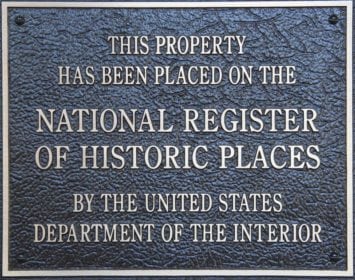
2. Discover the Building’s Future Purpose
Before you begin to pursue a way to save your building, you need to ask and answer the most important question in this entire process:
What is the purpose of the historic building?
When a building — whether it’s a home, warehouse, or commercial property — is first built, it serves a dedicated purpose. Over time, the purpose may shift, change, or disappear. Without a purpose, a building dies.
The building in your town you are trying to save is at this critical junction; it is your job to find a renewed purpose. Sure, it might be a great triumph to rescue a building from being torn down. But if there is no use for the building after this, it will fall into disrepair and dereliction. While you might save the building from immediate destruction, without a vision for its future, you will likely see it die a slow death.
Identify a new purpose for the building and give it new life. There are plenty of options: residential, apartments, offices, museum, non-profit headquarters, a visitor’s center, etc. It is only after you identify the purpose that you may proceed with the physical steps of preservation.
3. Find Partners for Your Project
Saving a historic building is not something you should attempt on your own. Recruit partners to join your mission. With passionate partners, you’ll gain greater reach into the community and increase your chances of success.
Here are some groups you can turn to for assistance.
Historical Groups
Your town or county likely has a historical society or preservation group that is passionate about telling your area’s history. Work with them to see how your building fits within their plan. They will have a better understanding of the state of historic preservation in your community. These experts often can provide realistic expectations for your project. They may have more pressing concerns with saving other buildings, or they may see your project as crucial, and throw their full support behind it.
If they’ve saved buildings in the past, they might already have the experience, knowledge, and connections with the right people to make your project much easier. It may even be beneficial to have their organization take the lead in the project, as they can collect donations and contact officials with greater ease.
Community Organizations
In addition to non-profit historical groups, there may be other local organizations to help you save your building. This includes merchant associations, neighborhood groups, Chambers of Commerce, and educational groups. Build a coalition of support around your cause takes time, and not everyone will see your project with the same passion as you do. But this support will go a long way towards saving your historic building.
Local Government
It is crucial that you talk to your local government and get them on board with your project. Their support in navigating local, state, and federal laws and regulations is invaluable to a historic building project. Your local leaders should see the benefits of restoring your community’s history through your project and share this vision with other organizations in your town. They can also provide tax breaks and other financial assistance to help make this project feasible.
State Historic Preservation Officers
Each state has an office that focuses on historic preservation. Their job is to support projects like yours, helping you receive funding and meet state and federal laws and regulations. Rely on their knowledge and deep experience; local historical groups may have completed a preservation project or two, but these state historic preservation officers work on hundreds each year.
Contractor or Developer
No matter what method you use to save your building, you will need to work with a developer or contractor. A contractor is needed to preserve and restore the building’s exterior, shore up the foundation and structural support, and finish the interior for its new purpose. Finding a developer who is passionate about saving this structure can be a real asset, as they will bring the resources and know-how for adaptive reuse.
4. Secure Funding
Funding your project is likely the most significant obstacle you’ll face. Restoring a historic building can be expensive — especially if it involves restoring, renovating, or moving the building.
Fundraising for your project can take anywhere from 6 months to several years, and many projects never achieve 100% funding. It’s best to work with a non-profit or professional fundraising consultant to help plan and prepare your fundraising campaign.
Potential Sources for Financing Your Project
State Grants
Most states have historic preservation grants allocated for building restoration. While the funds are often limited and can be highly competitive, it can be a real boost to your project to secure one of these grants. Reach out to your state preservation office for advice and paperwork to apply for these funds.
Tax Credits
If you are a non-profit organization looking to restore a building, you already qualify for several tax-exempt benefits. And if you are working with a developer to preserve a building through adaptive reuse, you can seek out various tax breaks and exemptions to reduce the costs of the project. Work with your local and county leaders to find a tax plan that can help make your project a reality.
Private Funding
Another source of funding is through private foundations, philanthropic trusts, and individual donors. You may already have a donor in mind as you pursue your project, or a donor may appear seemingly out of nowhere. Continue building relationships within your community and sharing your vision for the project with everyone you meet; you never know who might be the person to cut the final check.
Donations
For many projects, it is the small individual donations by families and community members that make a difference. Develop a plan for generating awareness and building excitement for your project. Get local media exposure whenever you can. Host fundraisers, fun family events, and auctions to widen your search for donors. Make it easy for people to donate, and make them feel like they’ve contributed to something worthwhile.
Success Stories
As you consider and start pursuing your preservation project, it can help to hear from others who have successfully saved a historic building from the landfill. Reach out to historical societies in your area or state that have completed a project like yours; their advice and guidance will be invaluable as you start your own project.
We’ve worked with private citizens to save historic buildings in their communities from destruction. Here are two of those stories.
Sturgis Railroad Depot
See how the Sturgis Historical Society saved and gave a renewed purpose to their town’s historic building.
View Project »
Landisville Stone House
Learn how a family successfully saved a 224-year-old, 500-ton stone home from demolition.
View Project »
What Threatens Historic Buildings?
Unfortunately, there are countless threats that face our beloved historic structures. Whether it’s from disrepair, lack of interest, or a developer’s plans, you need to identify the greatest threats to your building. Only once this is completed can you start working on finding a solution and a path toward saving the building.
Disrepair
The most common threat to any historic building is gradual neglect and disrepair. Older buildings can be expensive to maintain and upgrade to modern conveniences. Building owners can fail to provide necessary preventative maintenance to keep the building in top condition. The longer this goes on, the larger the mountain of repairs can get, until it is too great a cost for the owner to pay and the building is condemned and slated for demolition.
Unused or Abandoned
At times a historic building is sold as part of a larger property or tract of land. The land is valued by a developer or investor for a future use, but the building remains on the property without a purpose. Or perhaps a property is valued for its natural resources under the earth, and the building on the property is unused.
If a historic building sits for too long, it will get damaged from the elements, animals, and intruders. Plus, it can quickly become an eyesore that local residents will long to forget.

Developer’s Plans
A similar story is currently playing out in small towns across America: a developer buys a plot of property and has grand plans for the land, often at the expense of the buildings currently there. While recent buildings are designed and built to be disposable, historic buildings are unique, representing rare forms of architectural, cultural, and historic importance.

Growth of the Community
Your historic building may have been built in a time before automobiles, tractor trailers, and the suburbs. As your community changes, the building’s surroundings have changed, and it may no longer fit in the community’s plans for growth and planned improvements.
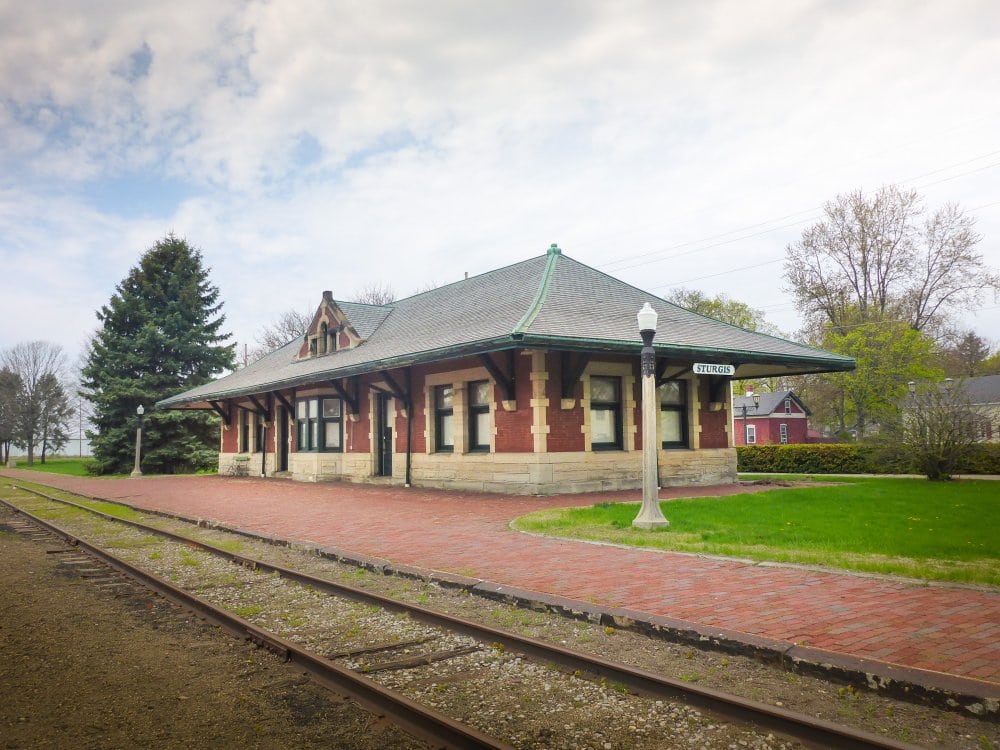
Weather
Nature is a powerful, unrelenting force that can overwhelm the oldest and sturdiest buildings. Over the decades, your historic building has seen its fair share of erosion, windstorms, and flooding. Modern improvements, site work, or even moving a historic structure can protect a building from regular and catastrophic weather events.
No matter if your historic building is facing one or several of these threats, it can seem daunting and overwhelming. But if you are passionate about preserving your community’s history, and can find a group of like-minded people, you can find a solution to safe your historic building.
Six Methods for Saving a Historic Building
While each building, and the threat it is facing, is unique, most methods for saving a historic building fall into 1 of 5 categories.
These categories include tactics you can use to persuade developers to modify their plans, galvanize community support behind a shared vision for the building, or make a drastic move to save a structure from complete destruction. Ultimately, you should be able to find a category that fits your situation and helps you keep your building for the next generation.
1. Preservation
Historic preservation involves protecting and conserving the history of the building as its been used throughout the years. A priority is kept on saving original materials, which can add costs to the preservation process and limit the building’s future uses.
2. Restoration
Historic restoration is a type of preservation that focuses on returning a historic building to the way it was in a certain time period. This method includes relying on historic documents (including blueprints and photographs) and using original building materials & techniques to restore the building to the way it looked in a certain period.
This is the preferred method for museums and historic groups looking to capture the look and feel of a historic period, as it provides an immersive educational experience.
3. Rehabilitation
With a building rehabilitation, emphasis is placed on making the proper repairs and alterations to keep the building functioning and useful. Additions and upgrades are allowed, with care placed on retaining or saving the portions of the building that have historical or cultural value.
4. Adaptive Reuse
Adaptive Reuse is a method of saving a historic building by modifying its original purpose. The historic characteristics can be preserved, while the building’s internals are modified to accommodate new purposes.
The most common examples of adaptive reuse: transforming an old warehouse into upscale apartments, converting a historic house into offices, and re-purposing a factory or industrial building into retail or museum space.
5. Mothball
Sometimes the best option for restoring a historic building lays in the future. Whether it is a lack of funds, government regulations, or a lack of clear vision or purpose for the building’s future purpose, these may be signs that you cannot restore the historic building at this time. In this case, the best choice might be to pause the project and mothball the building until you can restore it properly.
This means that the building will sit unused, closed and protected from further damage or wear & tear. The goal is to keep the historic building in a state of readiness, as was the case with the Jewish Historical Society Building in Washington, D.C., until you are ready to properly preserve the building or your preparations are complete.
6. Move
There are times when a historic building cannot be saved in its original location. Whether due to forces of nature or determined developers or land owners, the only solution is to physically move the building to a new location. While some historians and community members may bemoan severing the building from its original placement, moving a historic building is a far better outcome than seeing the entire building wind up in a landfill.
Concerns About Moving a Historic Building
Moving a historic structure is costly, time-consuming, and not right for every project. Consider these following concerns as you research moving a historic building:
- Can the building be moved? Is there room for the building to be transported either by public road or private property? Are there railroad crossings, utility lines, or other obstacles along the route?
- Is the building structurally sound? If not, the building can be shored up before the move.
- Can you find a new location for the historic building? You need to find and secure a location to which the building will be moved. Usually this will be less than 1 mile from its current location.
- How will a move affect a building’s historical value? History is about locations; by moving to a new site, you may lose some of the building’s historical value. Plus, this can jeopardize the building’s placement on the National Historic Register.
An experienced building moving company will help you answer these questions for your project.
Please use our contact form or give us a call at 610-488-1020 to request a free quote.
Advice on Moving a Historic Building
Follow these tips to give your project the best chance of success.
- Find property. You need to identify the new location for your historic building. Ideally, it will be land close to the existing location, to minimize the distance the building must travel. For most historic building, the move should be less than a mile, and on private property when possible.
- Find an experienced building mover. You want to work with a moving contractor who has successfully moved historic buildings like yours. Get them involved early for feasibility, planning, and site preparation.
- Build solid relationships with community leaders and the media. Not only will this help the project go smoothly, it can also generate excitement for the project, which can help with your awareness and fundraising campaigns. Plus, it’s always great when an entire community turns out for the once-in-a-lifetime experience of watching a building crawl down the street.
- Read our guide How to Prepare Your House to Be Raised or Moved for more advice.
Contact Us To Talk About Your Project
At Wolfe House Movers, we believe that we provide the best overall lifting and moving experience, terms, and insurance. We plan ahead to ensure that your experience with us is a positive one.
Call us at 610-488-1020 to speak with one of our helpful project estimators.
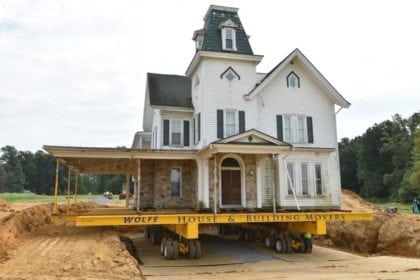 We moved this 18th-century Victorian home, known as the Arrowhead Springs Mansion, in Newmanstown, PA.
We moved this 18th-century Victorian home, known as the Arrowhead Springs Mansion, in Newmanstown, PA.Further Resources
Below are links to helpful organizations and online resources for historic preservation.
Organizations
Guides
- Top 10 Myths About Historic Preservation
- How To Save A Building: A Grassroots Guide for Local Preservationists
- Six Reasons to Save Old Buildings
- Applying for Historic Designation
- Federal Regulations for National Register
- Secretary of Interior’s Standards for Treatment of Historic Properties
- Preservation Magazine

